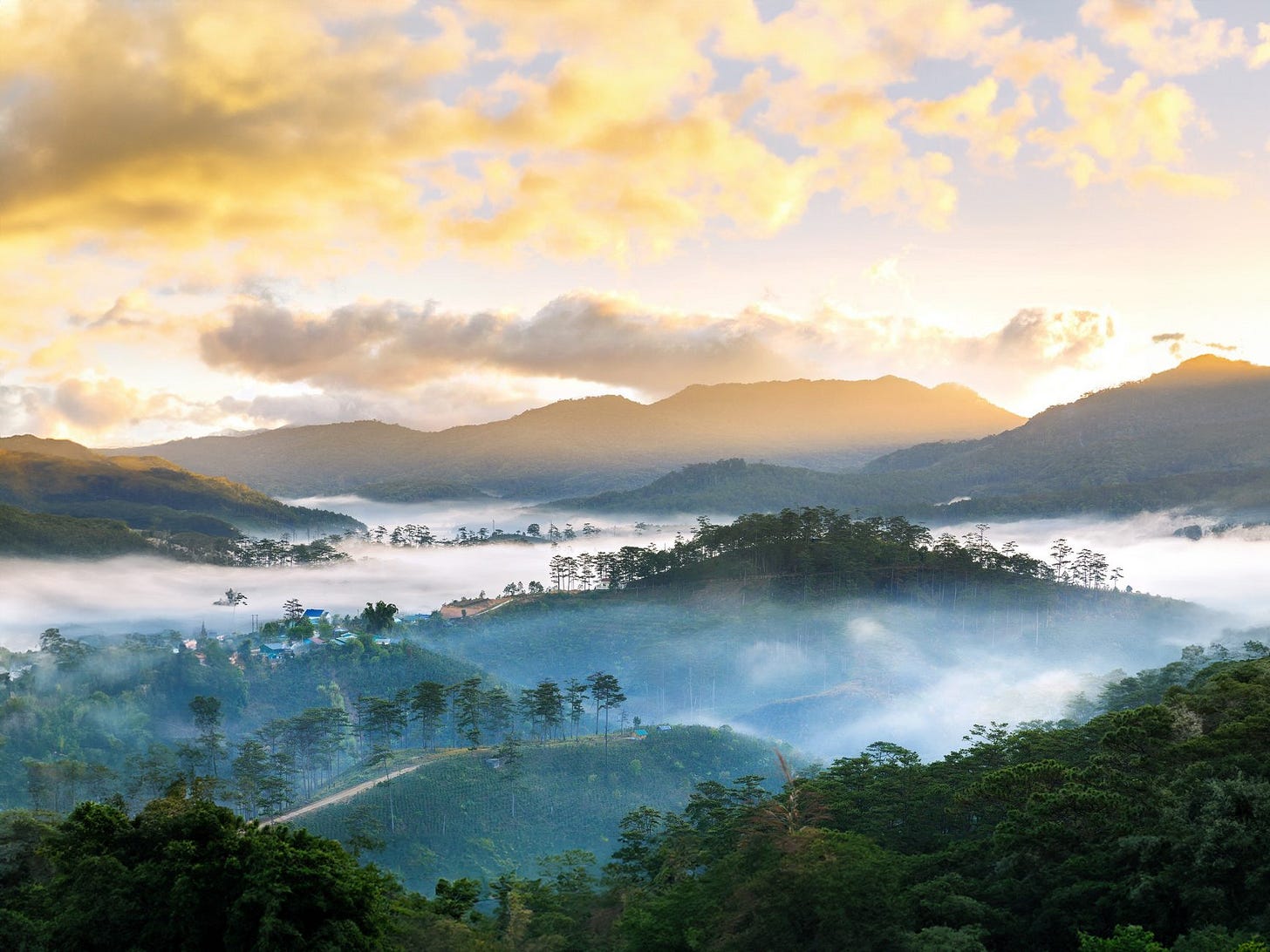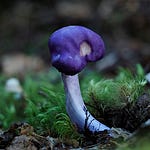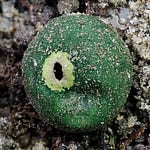In November, I had the pleasure of returning to Dalat, one of my favorite destinations in Vietnam. Although the region was edging out of the rainy season, sporadic showers persisted, creating a narrow window for my mushroom hunting endeavors.
Nestled in the Lam Dong Province, the mist-veiled terrains of Bidoup Nui Ba National Park is a biodiversity hotspot. To reach this enchanting locale, I rode my motorbike for about an hour north, eagerly anticipating the discoveries that lay ahead.
Before my trip, I reached out to the park via email, hoping for a guide to assist in my mushroom hunting. Receiving no response, I tempered my expectations.
As I approached the entrance, the scene was: a dilapidated headquarters with peeling paint and a solitary staff member managing the office.
She informed me that my email had been received, but unfortunately, no one at the park was knowledgeable about mushrooms. She provided me with a basic map, and I paid the 40,000 VND / $1.65 USD entrance fee before setting off on my adventure.
Along the trail, the sound of motorbike engines broke the calm; locals were using their bikes to traverse even these nature paths. I later discovered that this area housed an extensive aquaculture and farming operation in the valley.
At one point, I noticed a few locals stealthily moving under a barbed wire fence to a stream, armed with long poles and nets.
Remarkable Species
The park, predominantly covered in pine forests, initially led me to expect familiar fungi like Amanita, Boletes, and Cortinarius. However, a closer examination revealed a plethora of smaller, unexpected species.
I experienced the distinct ambiance of an ecotone (a place where tropical and temperate ecosystems converge, creating a unique hybrid environment).
This transitional zone was fascinating, as it harbored species I had encountered before, yet they exhibited unique adaptations that piqued my curiosity.
The mix of familiar species, each subtly altered to thrive in the specific conditions of the ecotone, made my exploration there particularly intriguing.
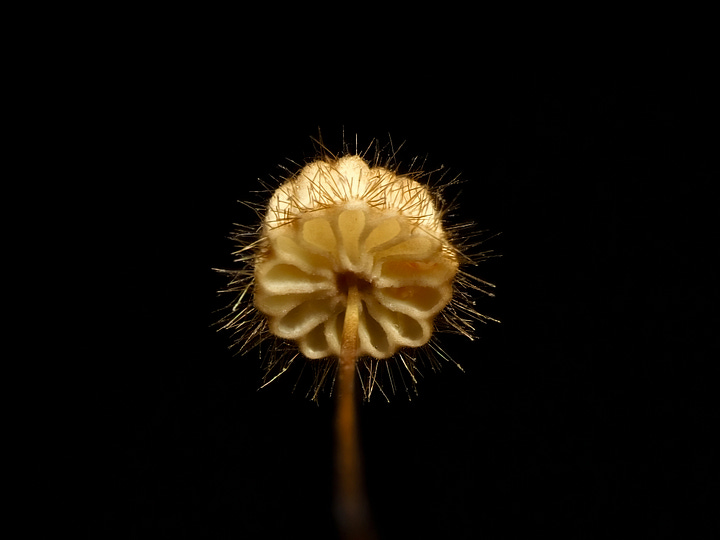
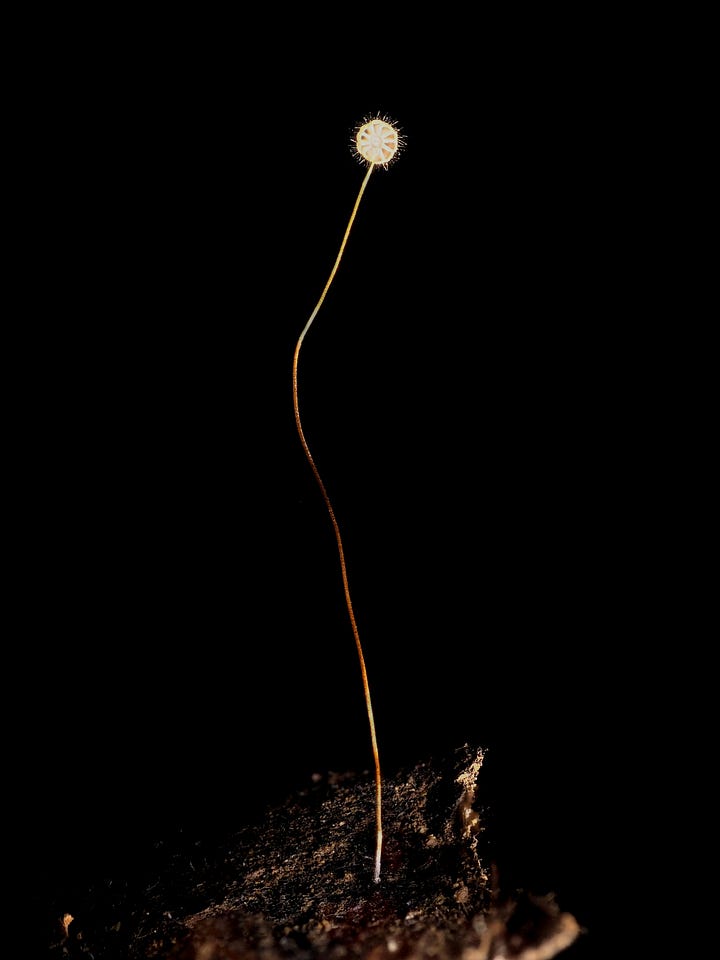
One find resembled a hybrid, with gills akin to Mycena picta, a stipe similar to horse hair Marasmius, complete with delicate staticky hairs.
It was so minuscule that it only caught my attention when I spotted it magnified on my camera screen.

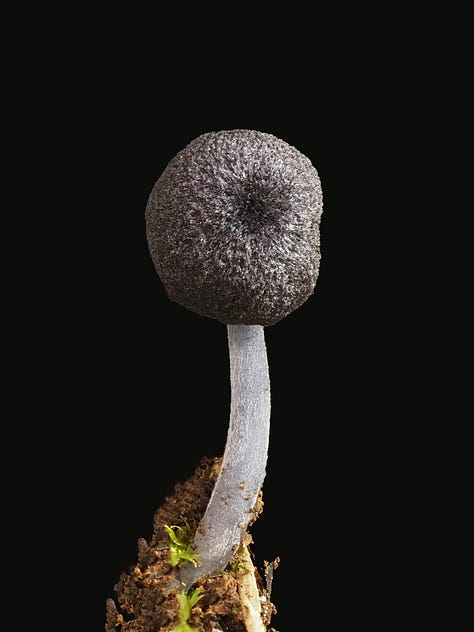
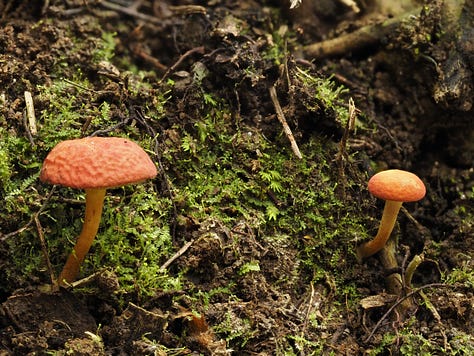
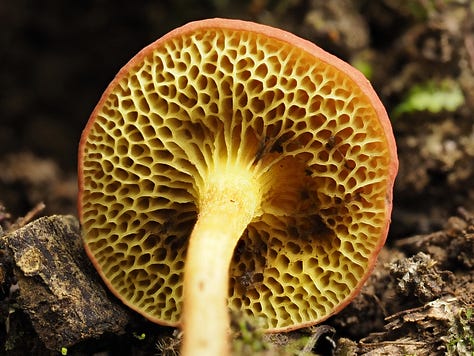
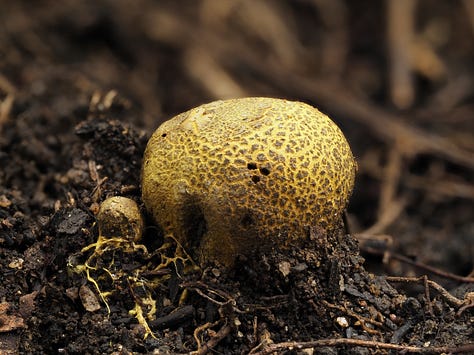
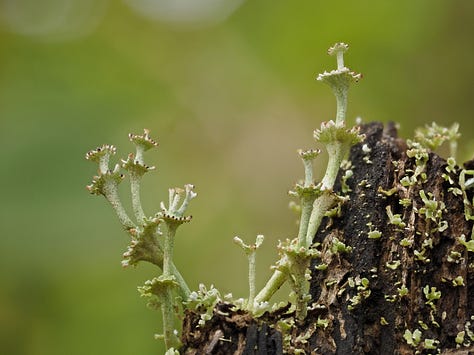
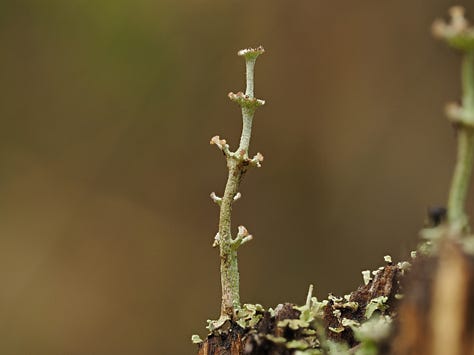
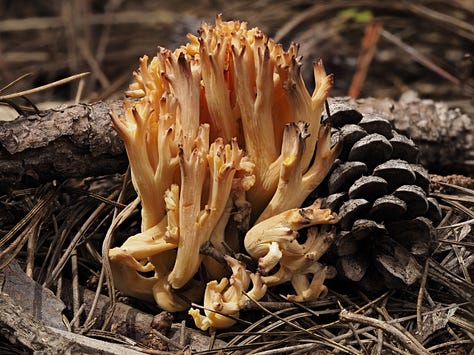

Among other discoveries were dark purple-blue Entolomaceae beside the trail, small Boletaceae with red caps and yellow pores, and a familiar yellow Scleroderma (Earthball).
The entrance was adorned with Caldonia on logs, and further along, I found yellowish-orange Ramaria growing beside a pinecone.
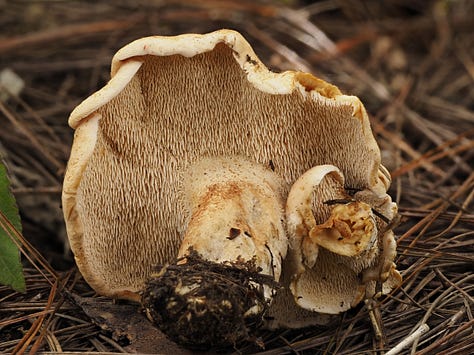

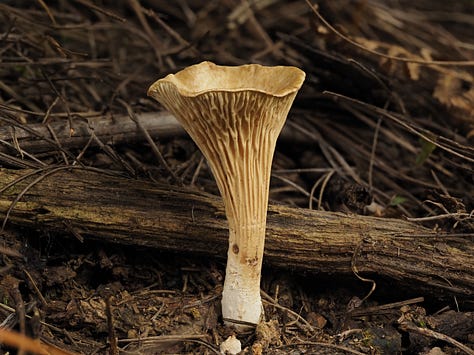
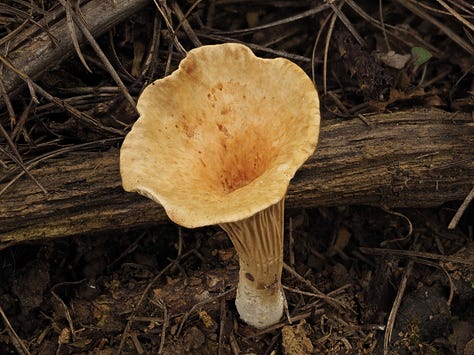
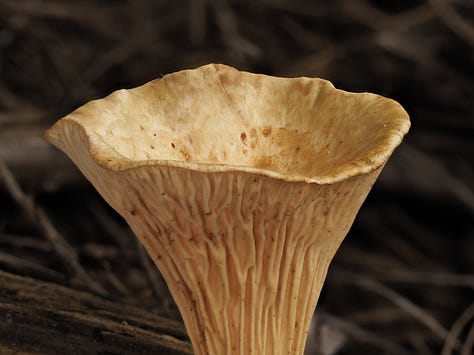
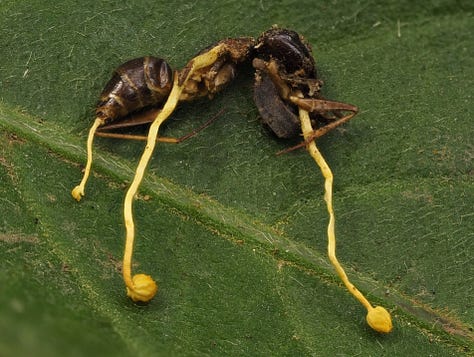
Other notable finds included Hydnum sp., also known as Hedgehog Mushrooms; funnel-shaped Turbinellus sp.; the tiny yellow perithecium of an Ophiocordyceps sphecocephala emerging from a wasp; and a long-awaited sighting of Helvella macropus, resembling a half-moon.
A friend dubbed the find as a “Half-moon Helvella.”
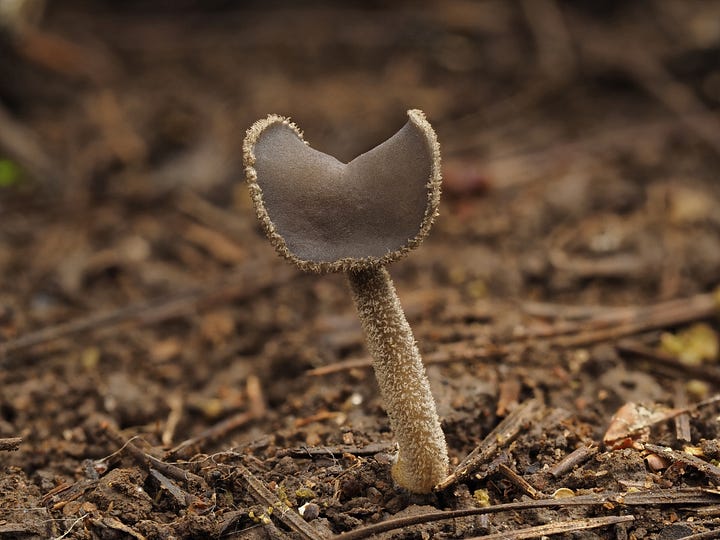
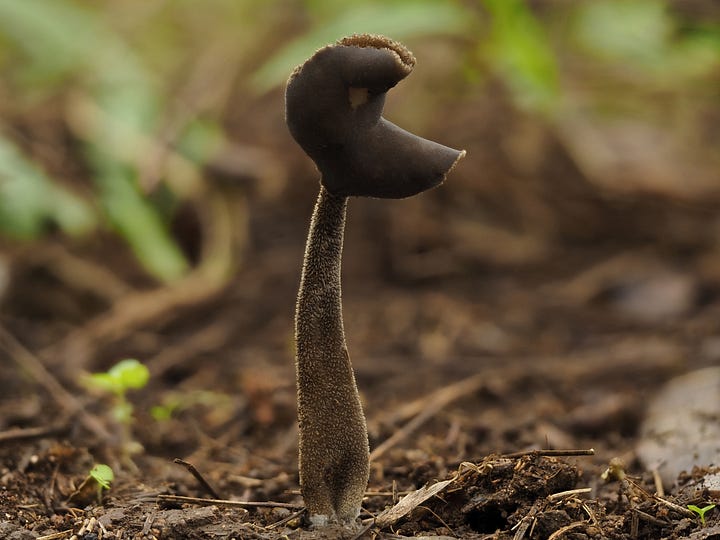
My trek concluded at the picturesque Thein Thai waterfall, the home to the god of water that is highly respected by the K’Ho community.
And along the way, I observed aquaculture farms dotting the valley, with vast stretches of pine trees extending as far as the eye could see.
This expedition not only enriched my understanding of the region's mycological diversity but also added a few remarkable species to my growing list of encounters.



